Australia has about 50 native palm biodiversity, some of which are widespread. They are often found in the continent’s subtropical and tropical regions; however, members of the genus are in milder climates and desert areas. Other types of palm trees in Australia will be discussed in detail.
The Daintree Rainforest in northern Australia is particularly rich in palm species; it is the oldest known tropical lowland woodland. Palm Valley, in the center of Australia’s cruel and barren outback, is the only area in the world where Red Cabbage Palms sprout. This spot presents a picture of what Central Australia used to be like when it had a tropical climate.
The Fan Palm is maybe Australia’s greatest classic palm, and it is frequently featured in tourism pamphlets promoting the distinctive Daintree Rainforest where it can be found. It is distinctive and iconic, with a pivotal trunk extending over 6m (30 feet) and a crown of wedge-shaped palm leaves that fit each other in a spiral manner.
The following are the Australian palm genera, listed in order of origin:
Archontophoenix, Arenga, Carpentaria, Calamus, Caryota, Cocos, Corypha, Gronophyllum, Laccospadix, Normanby, Oraniopsis, Ptychosperma, and Wodyetia are all common species. Gulubia, Hydriastele, Licuala, Linospadix, Livistona, and Nypa are rarer species.
Table of Contents
Types of Palm Trees in Australia
Their graceful green leaves can reinforce the idea that a garden is situated on a palatial tract of normal rainforest.
Let us start by looking at these various palm varieties that are effective for various regions in or around Australia.
1. Chinese Windmill
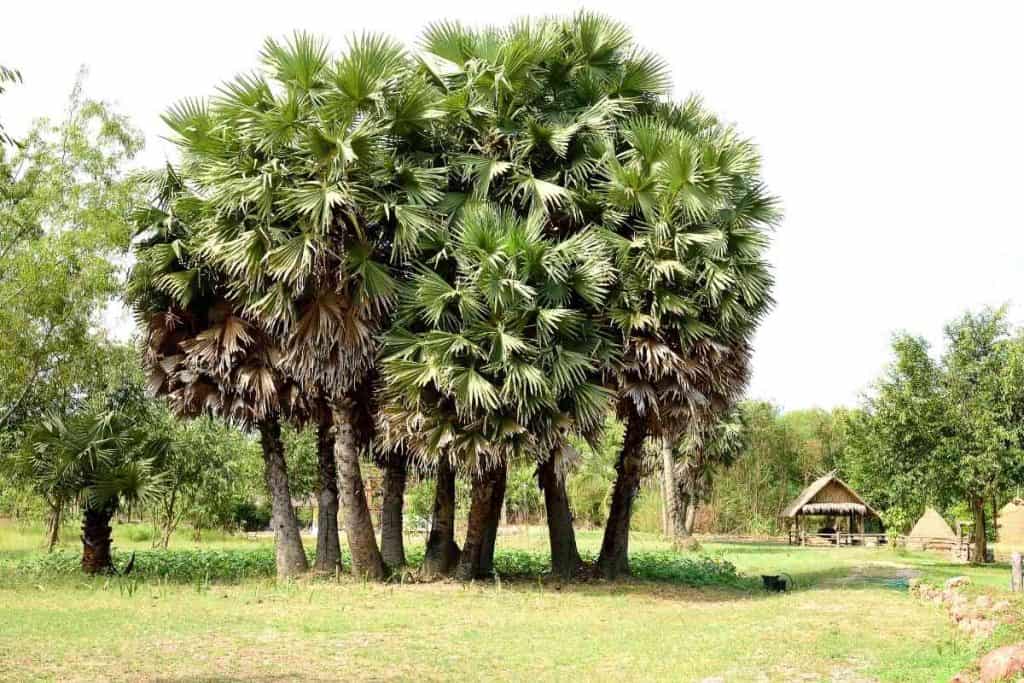
Trachycarpus Fortunei is the botanical name for the Chinese Windmill.
Extreme frost tolerance up to -15°C.
The Windmill, also known as the Chusan palm, is found in mountainous regions of Taiwan, China, southern Japan, northern Myanmar, and India. It is a cooler tolerant species and can be grown in Victoria, Australia.
The windmill palm is inappropriate for Australia’s tropical regions because it does not withstand hot, wet, humid summers. Fungal diseases are caused by excessive rain and moisture.
The palm’s stem appears to be encased in hessian. The windmill palm is exceedingly resilient and tolerant, rising to 7 meters – and 15 meters after 100 years. This makes it an excellent choice for inexperienced growers.
2. European Fan Palm

Chamaerops humilis is the botanical name for the European Fan Palm.
Extreme frost tolerance up to -15°C.
Because of its hardiness and wind sensitivity, the European fan palm, also widely recognized as the Mediterranean fan palm tree, is a common pick for cooler environments.
This is one of Europe’s only native palm trees. It is the world’s northernmost evolving palm, rising on the arid hillsides of the Mediterranean. The palm thrives in chilly, damp winters and a hot, dry climate.
The palm has a ferny appearance and grows in numerous trunk clusters. The stem is protected in brown fibers and has a base of bluish-green or silvery foliage. When ripe, the palm generates small yellow blossoms and fruit that turns brown.
This sluggish palm can reach a height of 2.5 meters in 10-15 years. Even though it prefers full sun and mild temperatures, its sturdiness enables it to withstand cold weather. Once formed, the plant is resistant to drought.
3. Wine Palm
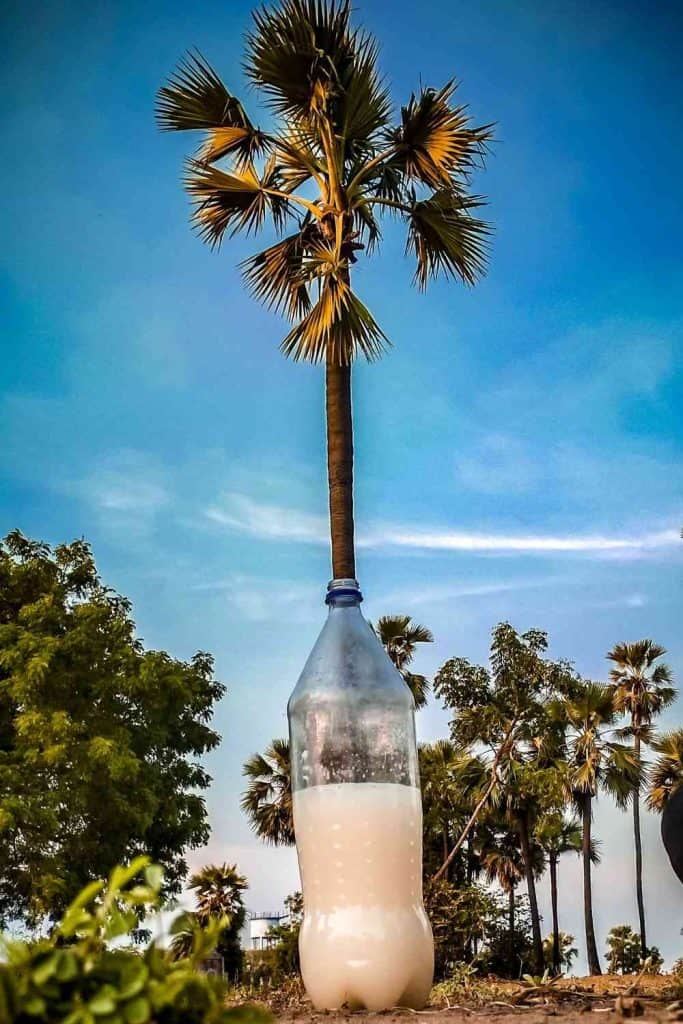
Butia Capitata is the botanical name for the wine palm.
Can withstand severe frosts
The wine palm, also recognized as the jelly palm, is among the world’s toughest palms. The palm is a South American native with feathery leaves and a strong trunk. After several years, the palm can reach a height of 4.5 meters and eventually reach 25 meters.
The leaves vary in color from pale green to blue-grey and develop to a height of 1.5-3.0 meters.
The wine palm is a cold and water shortages tolerant palm suitable for cultivation in Victoria, Australia.
4. Dwarf Date Palm
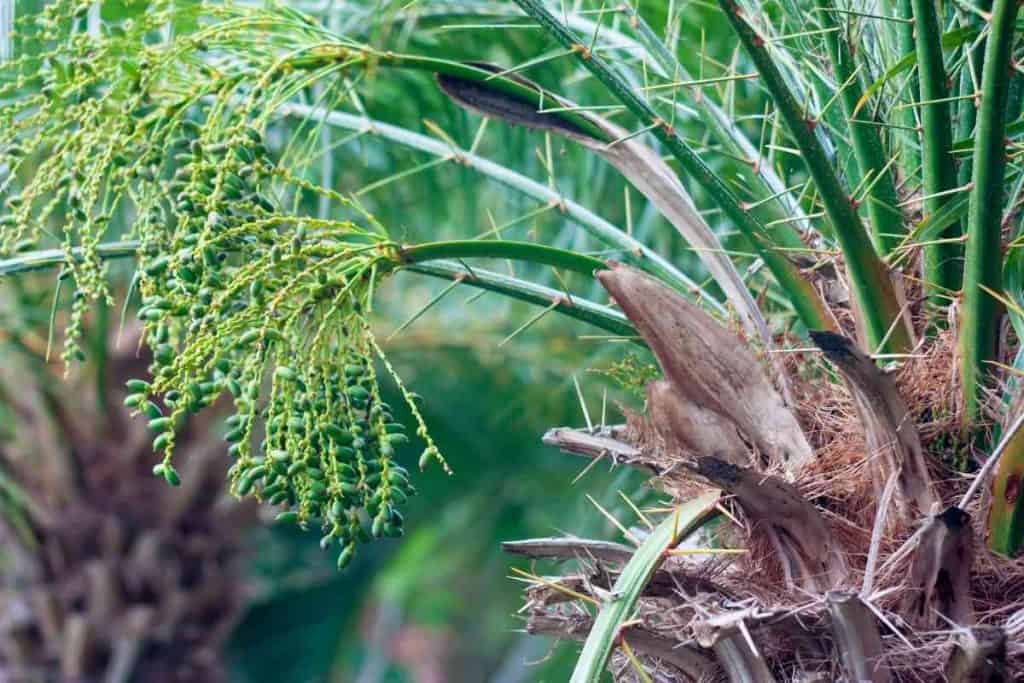
Phoenix roebelenii is the botanical name for Dwarf Date Palm.
Tolerates light frost.
The dwarf date palm, also widely recognized as the pygmy date palm, is a famous garden plant. It is the shortest palm in the date palm family and develops to about three meters in height. It is native to Asia. This lovely dwarf palm has good, coiling green outer leaves and a sturdy trunk.
A sluggish, long-lived variation appropriate for well-lit indoor spaces, patios, or open lawns. Once formed, this palm is resistant to drought.
5. The palm of Golden Cane (Dypsis lutescens)
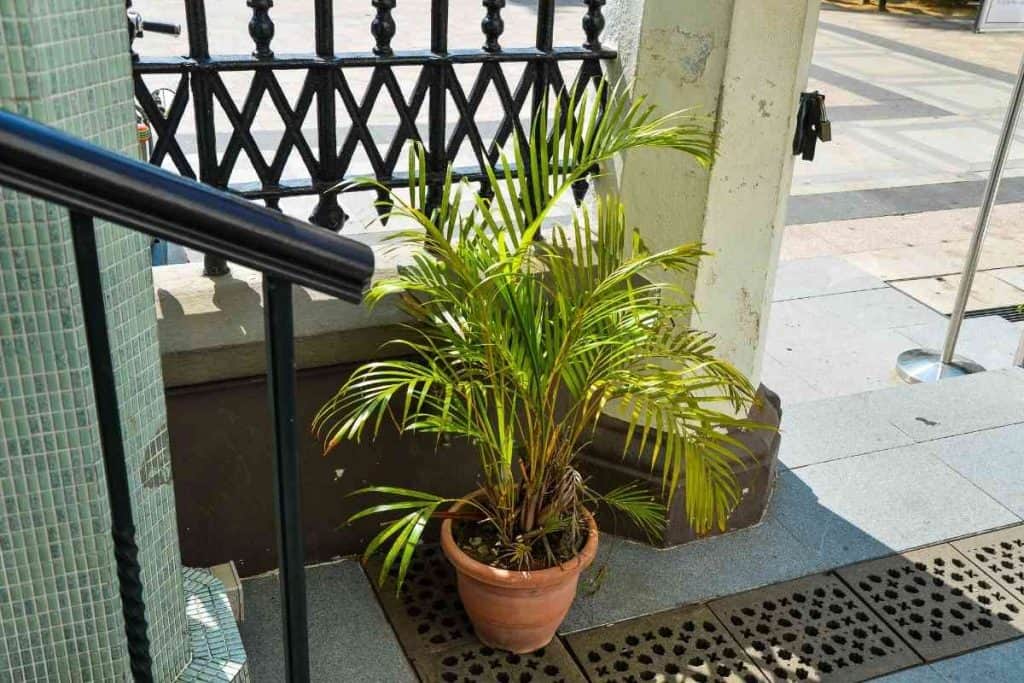
The golden cane stems and gold-green leaves of this palm distinguish it. It can withstand salty winds and sandy soils, making it an excellent vetting and windbreak plant. Tropical and subtropical environments are preferred.
6. Palm Kentia (Howea forsteriana)
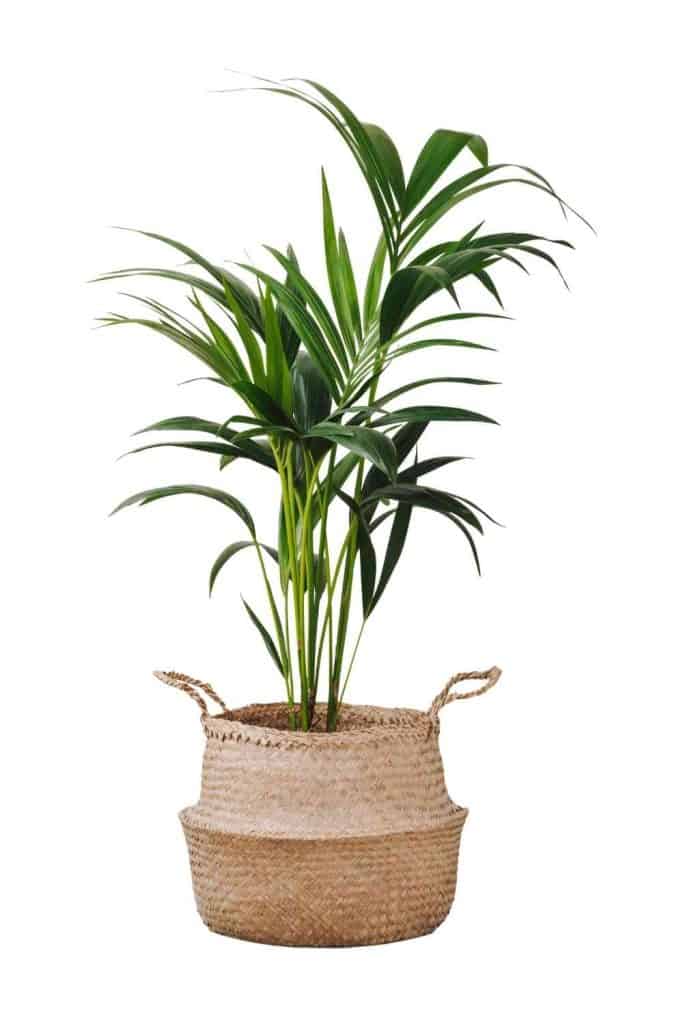
This graceful palm thrives in pots and indoors. It requires frost-free environments and can withstand salt-laden winds. A warm and wet or subtropical environment is preferred.
7. Dwarf Sugar Palm
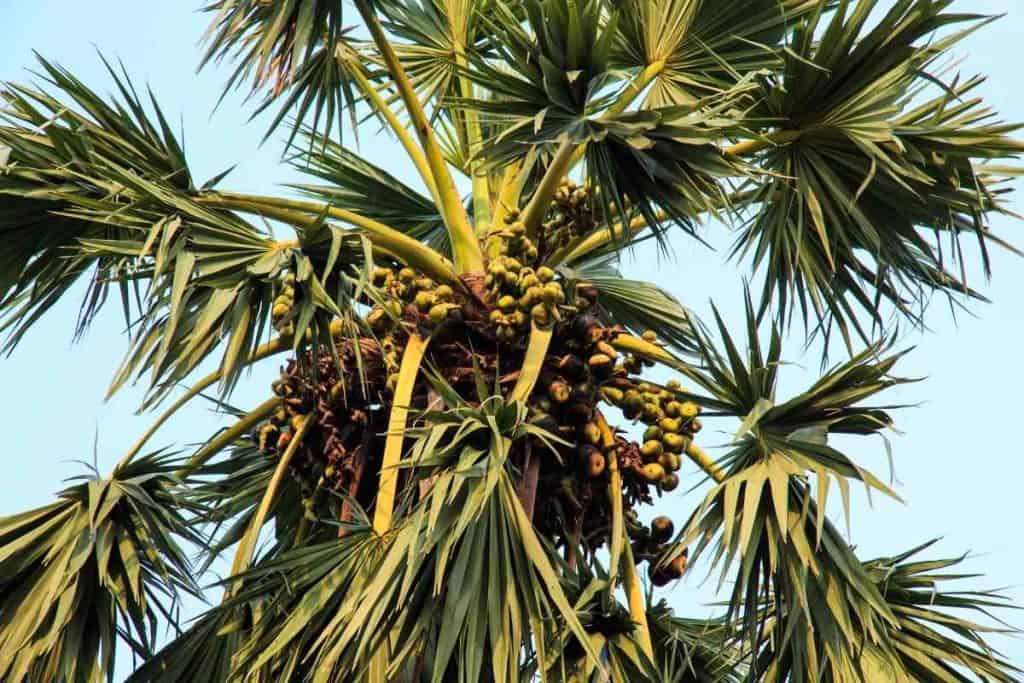
Arenga Engleri is the botanical name for Dwarf Sugar Palm.
Tolerates light frosts up to -7°C.
The dwarf sugar palm is regarded as one of the most beautiful fostered and terrain palms. The fronds are incredibly beautiful with their unique, lengthy fishtail-shaped leaves that are dark olive. It blooms with scented yellow flowers.
In Victoria, developing a dwarf sugar palm will add a touch of tropical elegance to your orchard. This grouping palm tends to grow no taller than 3.1 meters and has a spread of up to five meters.
Frequently Asked Questions
Dwarf palm plants grow to be how long?
Dwarf palms are palm trees less than 20 feet (6 meters) tall. The majority of the small palm trees have a single spine, while others have various stems. The feather-like or fan-shaped green leaves of all comparatively tiny or dwarf palm trees distinguish them.
Can you grow palm trees near your house?
Newly planted palm trees near a building or pool are fine but keep in mind their fully grown dimensions so they don’t infringe on a roof or overtake a screened pool canopy, possibly creating harm or extra cost.
Is it possible to keep palm trees small?
Many palm trees cannot be made smaller, but you can slow their development by creating circumstances that crowd their roots. Instead of moving your palm to a larger container as it keeps growing, could you keep it in the smaller one? The palm’s progress will be slowed if the root systems do not have enough room for expansion.
What is the shortest mature palm tree?
The dwarf palmetto, which grows about 3 feet tall, is the shortest palm tree discovered. Small Palm Trees are normally cultivated in gardens to provide an eco-friendly appearance. Their small size makes them ideal for growing on the front lawn.
Conclusion
There are over 25000 species of palm trees, with approximately 50 of these species found in Australia. These plant species are distinguished by a single, unbranched stalk and huge leaves clustered around the top. Because of their exotic appeal, they are extensively planted and used in landscapes.
Palms are categorized into two categories: palmate and pinnate. Palmate palms have huge, fan-like blades, whereas pinnate palms have feather-like fronds. Both kinds of foliage are usually organized helically at the end of the stem, and the blossoms are tiny and develop into a single-seeded fruit.
While many palm species are available for purchase and cultivation in Australia, this article focuses on more widespread native species.
Here's what to read next:
- 5 Different Types of Palm Trees in Georgia (With Pictures)
- Top 6 Types of Palm Trees in South Africa
- Top 8 Types of Indoor Palm Trees (With Pictures)




